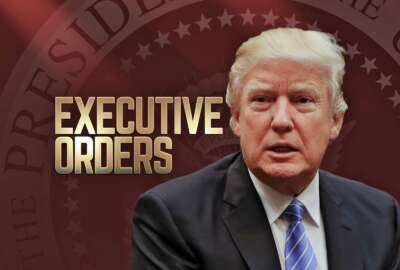The Office of Personnel Management wants to give civilian agencies a little more flexibility than they originally bargained for in granting direct-hire authority.
According to a new proposed rule, which OPM issued Monday, agency heads will soon have the authority to not only determine whether their organizations need direct-hire authority to fill certain IT positions but also grant that authority on their own.
Currently, the direct-hire process starts with OPM, which must first determine whether one or more agencies have a critical hiring need and then physically grant direct-hire authority if approved.
The proposed rule comes in response to an executive order that President Donald Trump signed back in May. The EO gave most chief information officers authority to report directly to their agency head. It also gave CIOs direct-hire authority to fill critical skills gaps and instructed OPM to issue regulations describing the details.
Originally, the EO intended to simply give agency heads the ability to decide whether it needed direct-hire authority. OPM would continue to actually grant the authority based on the agency’s determination and supporting evidence.
But OPM’s regulations go a step further and give agencies the ability to both decide and issue a direct-hire authority on their own. OPM, however, will continue its oversight on this process.
“After the determination is made, the deciding agency is required to provide the determination and a description of the supporting evidence to OPM,” the regulations read. “OPM may request access to the underlying documentation at any time and may require corrective action.”
OPM’s proposed rule would cover most civilian agencies but not the Defense Department, which was exempt from the president’s EO. Specifically, the regulations give agencies the authority to determine whether they have a severe shortage of candidates in the information technology management series or a shortage of “highly qualified candidates” for the Veterans Affairs Department.
Comments are open on OPM’s proposed rule through Dec. 28.
Agencies can use this authority to hire top candidates to IT positions for an initial appointment for longer than a year, but no more than four years, according to the regulations. Agencies can extend appointments for up to another four years, but direct-hire employees can’t serve for more than eight years at the same agency. They could move to other organizations but must serve only in IT positions.
The direct-hire authority itself doesn’t differ from previous flexibilities that OPM has approved in the past. Agencies must continue to publicly post positions and their descriptions. They don’t have to rate and rank applicants and assign numerical ratings to them; agencies can simply select and process applications in the order in which they were received.
Avoiding an ‘arduous’ hiring process
OPM earlier this month gave agencies broad direct-hire authority to hire for IT and cybersecurity positions, as well as science, technology, engineering and math (STEM) occupations for all agencies. But OPM’s latest rule gives agencies broader flexibilities and encourages them to put more thought and consideration into their hiring needs.
Asking for direct-hire authority under today’s process is arduous, and agencies often tried to avoid it, said Jonathan Alboum, former Agriculture Department CIO and now chief technology officer for public sector at Veritas Technologies.
In justifying their need for direct-hire authority, agencies often detailed circumstances that were specific to their individual needs. Their appeal for a particular position may not have matched up with other agencies’ justifications, and OPM may not have granted the authority, Alboum said.
Though OPM’s regulations may help agencies avoid a few steps in the existing process and give hiring managers the tools they need to bring in qualified IT professionals more quickly, they don’t necessarily help CIOs overcome a limited cybersecurity and IT talent market.
“Giving power to agency admin to make those determinations helps agencies hire faster and takes some of the burden off of relying on contractors to fill specialized roles,” he said.
Having easier access to direct-hire authority would help CIOs more quickly fill positions after seasoned IT professionals retire or leave government, said Robert Klopp, former CIO of the Social Security Administration and now an independent technology consultant. But direct-hire authority doesn’t help agencies compete in an already-crowded market for top tech talent, he said.
Agencies need to make an investment in recruiting, training and grooming a pipeline of new IT talent, Klopp said, instead of playing “whack-a-mole” to quickly fill vacancies.
But even if more flexible authorities don’t resolve all of agencies’ long-term hiring needs, the new direct-hire process may force agencies to be more strategic in determining who they’d like to recruit and how they describe those positions to the job market — and OPM, which will still read and evaluate agencies’ determinations.
In justifying the use of direct-hire authority, “agencies really need to think through what their needs are and not just jump to posting something based on a maybe antiquated position description,” Alboum said.
Better job descriptions often lead to better candidates, he added.
Copyright
© 2024 Federal News Network. All rights reserved. This website is not intended for users located within the European Economic Area.
